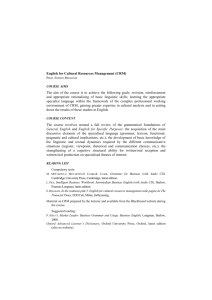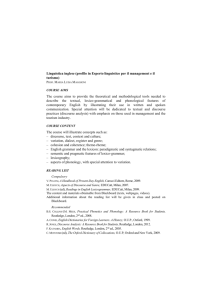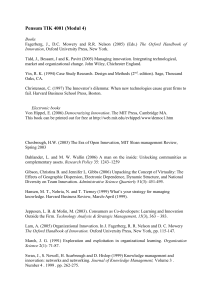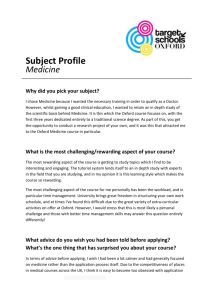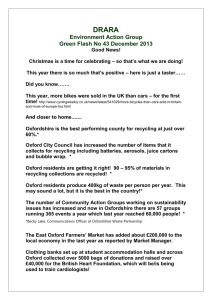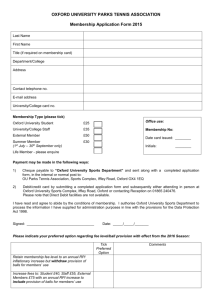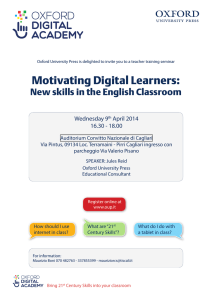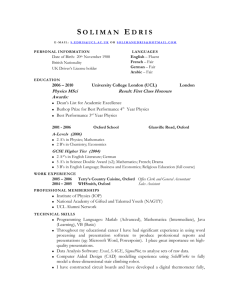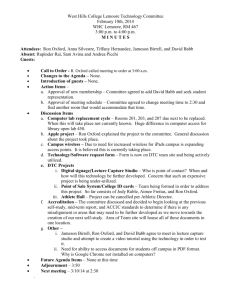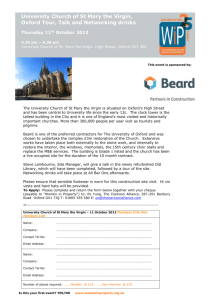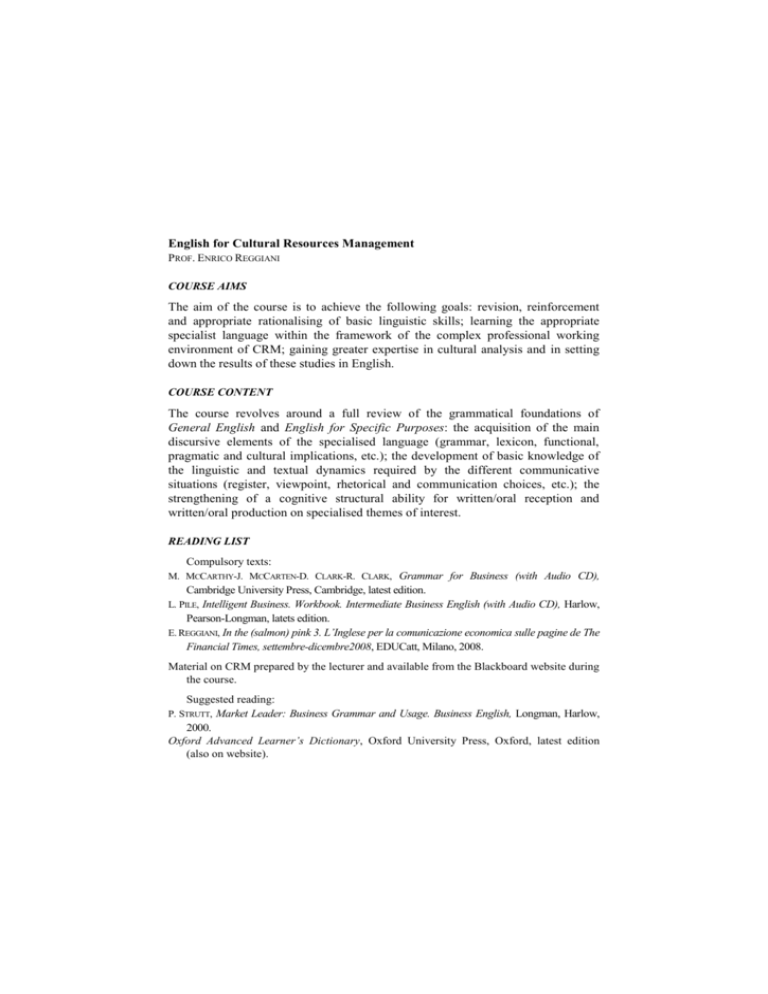
English for Cultural Resources Management
PROF. ENRICO REGGIANI
COURSE AIMS
The aim of the course is to achieve the following goals: revision, reinforcement
and appropriate rationalising of basic linguistic skills; learning the appropriate
specialist language within the framework of the complex professional working
environment of CRM; gaining greater expertise in cultural analysis and in setting
down the results of these studies in English.
COURSE CONTENT
The course revolves around a full review of the grammatical foundations of
General English and English for Specific Purposes: the acquisition of the main
discursive elements of the specialised language (grammar, lexicon, functional,
pragmatic and cultural implications, etc.); the development of basic knowledge of
the linguistic and textual dynamics required by the different communicative
situations (register, viewpoint, rhetorical and communication choices, etc.); the
strengthening of a cognitive structural ability for written/oral reception and
written/oral production on specialised themes of interest.
READING LIST
Compulsory texts:
M. MCCARTHY-J. MCCARTEN-D. CLARK-R. CLARK, Grammar for Business (with Audio CD),
Cambridge University Press, Cambridge, latest edition.
L. PILE, Intelligent Business. Workbook. Intermediate Business English (with Audio CD), Harlow,
Pearson-Longman, latets edition.
E. REGGIANI, In the (salmon) pink 3. L’Inglese per la comunicazione economica sulle pagine de The
Financial Times, settembre-dicembre2008, EDUCatt, Milano, 2008.
Material on CRM prepared by the lecturer and available from the Blackboard website during
the course.
Suggested reading:
P. STRUTT, Market Leader: Business Grammar and Usage. Business English, Longman, Harlow,
2000.
Oxford Advanced Learner’s Dictionary, Oxford University Press, Oxford, latest edition
(also on website).
A. TUCK (ed.), Oxford Dictionary of Business English for Learners of English, Oxford University
Press, Oxford, latest edition.
F. PICCHI, Economics and Business. Dizionario Enciclopedico e Commerciale Inglese-Italiano,
Italiano-Inglese, Zanichelli, Bologna, latest edition.
Cultural
policies
and
Trends
in
Europe
(http://www.culturalpolicies.net/web/index.php).
Introduction: Considering Cultural Resource Management in Modern Society, in P. FRANCIS
MACMANAMON-ALF HATTON (ed.), Cultural Resource Management in Contemporary
Society Perspectives on Managing and Presenting the Past, London, Routledge, 2000
[pp. 1-19 (Library UCSC)].
DON D. FOWLER, “Cultural Resources Management [in the US]”, Advances in Archaeological
Method and Theory, 1982, Vol. V [pp. 1-50 (JStor)].
COMPENDIUM,
TEACHING METHOD
Lectures with the use of multimedia aids.
ASSESSMENT METHOD
Final test (30 minutes in duration) to be held on Blackboard. In addition, the student will
have the option of integrating the written exam with an oral exam.
NOTES
The programme published here is subject to change should any particular didactic needs
arise, in which case any such changes will be published, within the end of the course, in the
online version of this programme, which the student can find on the Blackboard course
page, which all students must visit regularly in its entirety and learn its contents.
Further information can be found on the lecturer's webpage at
http://docenti.unicatt.it/web/searchByName.do?language=ENG, or on the Faculty notice
board.

